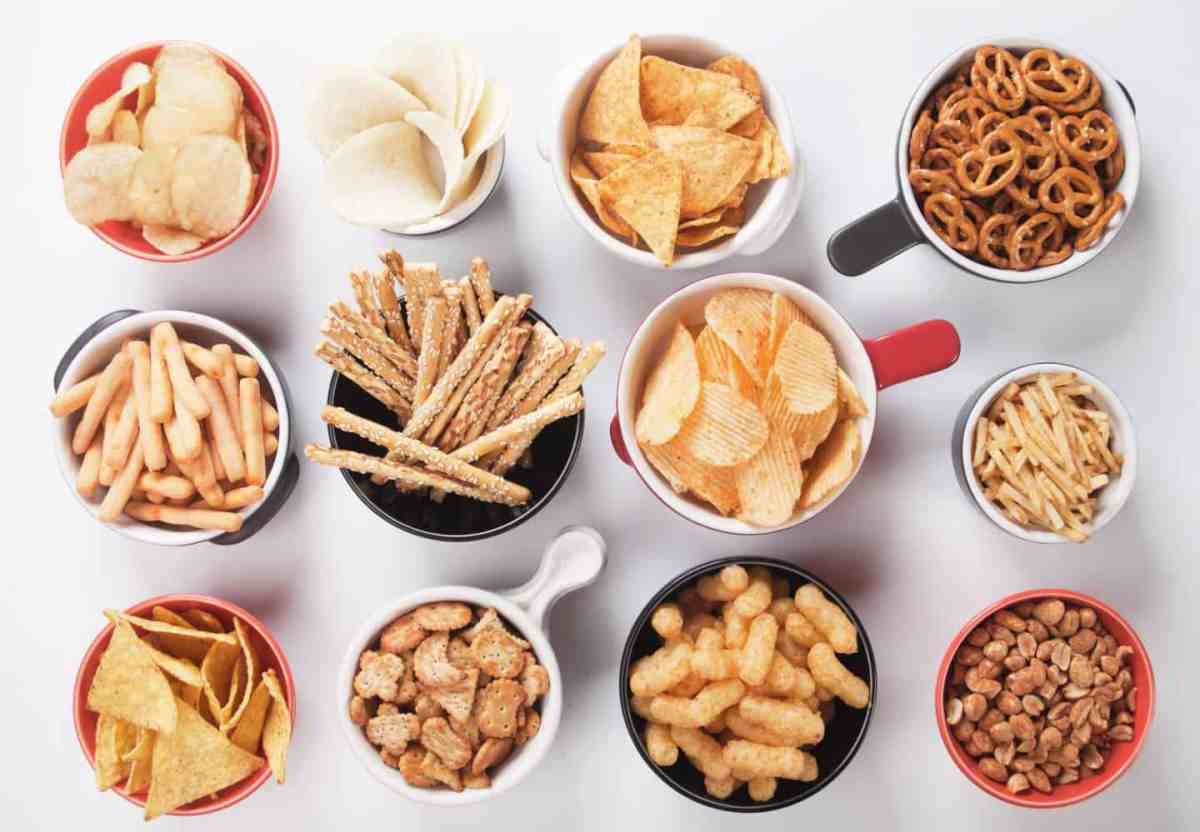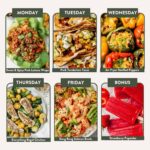Imagine a world of delicious, dairy-free snacks that satisfy your sweet and crunchy cravings, all while being perfectly portable for your busy life. This guide dives into the vibrant realm of creating delectable, on-the-go treats without any dairy, exploring a range of ingredients, innovative recipes, and practical tips for packaging and storage. Prepare to discover the perfect balance of flavor and texture, tailored to your dietary needs and lifestyle.
We’ll journey through the process of selecting the best dairy-free ingredients, showcasing their unique textural and flavor profiles, and revealing how they combine to create an explosion of sweet and crunchy goodness. From crafting three original recipes to mastering the art of adapting them for various dietary restrictions, this guide provides a comprehensive toolkit for anyone seeking healthy and satisfying dairy-free snacks.
Packaging and Storage of Dairy-Free Snacks

Maintaining the freshness, crunch, and overall quality of dairy-free snacks requires careful consideration of both packaging and storage methods. The right packaging protects against moisture, oxygen, and light, while proper storage helps to extend shelf life and prevent spoilage, ensuring your snacks remain enjoyable for as long as possible.
Packaging materials significantly impact the shelf life and sensory attributes of dairy-free snacks. The choice of packaging should balance factors such as cost, environmental impact, and the specific needs of the product.
Packaging Material Selection
A variety of packaging materials are suitable for dairy-free snacks, each with its own advantages and disadvantages. Consider factors like barrier properties (resistance to moisture, oxygen, and light), cost, recyclability, and aesthetic appeal when making a selection.
- Flexible Packaging: Pouches made from materials like polyethylene (PE), polypropylene (PP), or laminated films offer excellent barrier properties, are lightweight and portable, and are often cost-effective. These pouches are often sealed using heat sealing or zipper closures, ensuring a tight seal to maintain freshness. Imagine a vibrant, resealable pouch featuring a clear window to showcase the colorful snack within. The glossy surface enhances the product’s visual appeal.
- Rigid Packaging: Containers made from recyclable materials like cardboard or paperboard provide good protection but might require additional liners to improve barrier properties. For example, a sturdy cardboard box with a wax-coated inner lining could house a larger quantity of crisps, offering good protection against crushing and maintaining crispness. The box could be adorned with eye-catching graphics, clearly labeling the product and its key features.
- Biodegradable Packaging: Options such as compostable films made from plant-based materials offer an environmentally friendly alternative. However, these often have a higher cost and may not offer the same barrier properties as traditional plastics. Picture a clear, compostable bag showcasing the snack’s natural ingredients, highlighting the product’s commitment to sustainability. The bag’s transparency allows consumers to see the product clearly.
Storage Recommendations for Optimal Freshness
Proper storage is crucial for maintaining the quality and extending the shelf life of dairy-free snacks. Temperature and humidity play significant roles in preserving texture and preventing spoilage.
- Temperature Control: Most dairy-free snacks are best stored in a cool, dry place, away from direct sunlight and heat. High temperatures can accelerate oxidation and lead to staleness. A pantry or cupboard at room temperature is usually ideal. Storing snacks in the refrigerator may not always be beneficial, as the cold can affect the texture of some products, making them less crunchy.
- Humidity Control: High humidity can cause dairy-free snacks to become soft and lose their crispness. Maintaining a low humidity environment is essential for maintaining optimal texture. Using airtight containers or sealed packaging helps to control moisture levels.
- Proper Sealing: After opening a package of dairy-free snacks, it’s important to reseal it tightly to prevent air and moisture from entering. Using clips or transfering the remaining snacks to an airtight container will help maintain freshness.
Environmental Impact and Cost Considerations
Choosing packaging materials involves weighing environmental concerns against cost-effectiveness. While biodegradable options are environmentally preferable, they often come with a higher price tag. Traditional plastics, though less environmentally friendly, may be more cost-effective for mass production. A balance must be struck to minimize environmental impact without compromising affordability and product quality. For example, a company might opt for recyclable plastic pouches for their large-scale production, while offering a smaller, biodegradable option for a premium product line. This approach balances cost-effectiveness with an environmental commitment.
Adapting Recipes for Dietary Restrictions
Creating delicious and crunchy dairy-free snacks is achievable, but catering to various dietary needs requires thoughtful recipe adaptation. This involves substituting ingredients to eliminate common allergens like gluten and nuts while maintaining the desired texture and flavor profile. The following sections detail how to modify three original recipes (assumed to be provided elsewhere) to accommodate gluten-free, vegan, and nut-free diets.
Gluten-Free Adaptations
Many naturally gluten-free ingredients can replace those containing gluten, ensuring a delightful crunch. For instance, if a recipe calls for wheat flour, substituting it with a blend of almond flour, coconut flour, and tapioca starch will maintain the texture. The ratio of these flours might need some experimentation to achieve the desired consistency. Using gluten-free oats in place of regular oats is another simple swap. Remember to check all ingredient labels to confirm their gluten-free status, as cross-contamination can occur during processing. Substituting gluten-free flours may slightly alter the nutritional profile, often resulting in a higher fiber content and potentially lower protein content compared to wheat flour. The taste may also be subtly different, often described as slightly sweeter or nuttier depending on the flour blend used.
Vegan Adaptations
Adapting recipes for vegan diets primarily focuses on eliminating dairy and animal products. This often involves replacing butter or other dairy fats with plant-based alternatives like coconut oil, vegan butter, or applesauce. Honey or other animal-derived sweeteners can be easily replaced with maple syrup, agave nectar, or date paste. The texture changes are usually minimal; however, the flavor profile might shift slightly depending on the chosen substitute. For example, substituting coconut oil for butter will impart a subtle coconut flavor, which may be desirable in some recipes but not in others. From a nutritional standpoint, vegan adaptations can increase the fiber content and reduce saturated fat, depending on the specific substitutions made.
Nut-Free Adaptations
Adapting recipes to be nut-free is crucial for individuals with nut allergies. This requires carefully replacing any nuts or nut-based ingredients. Sunflower seeds, pumpkin seeds, or even coconut flakes can effectively replace nuts in many recipes, providing a similar crunch. Nut butters can be substituted with sunflower seed butter or tahini, although the flavor profile will differ. The nutritional impact will vary; for instance, sunflower seeds offer a good source of Vitamin E, while pumpkin seeds are rich in zinc. It’s important to note that cross-contamination is a significant concern when handling nut-free products, so ensuring dedicated preparation areas and equipment is essential. The texture may change slightly depending on the chosen substitute, but careful experimentation with ratios and preparation methods can mitigate this.
Embarking on the creation of your own sweet and crunchy dairy-free snacks is a rewarding experience, empowering you to control the ingredients and tailor them to your specific preferences. From the satisfying crunch of perfectly toasted nuts to the delightful sweetness of naturally sourced sugars, each bite becomes a testament to your culinary creativity and commitment to a healthier lifestyle. This guide provides not only recipes but also a pathway to understanding the nuances of texture, flavor, and dietary considerations, ensuring that your on-the-go snacks are as delicious as they are convenient.
Answers to Common Questions
What are some common allergens to watch out for in dairy-free snacks?
Common allergens to be mindful of include nuts, soy, gluten, and sesame seeds. Always check ingredient labels carefully.
How long can homemade dairy-free snacks typically last?
This depends on the ingredients and storage method. Properly stored, many snacks can last for several days to a week. Always err on the side of caution and check for any signs of spoilage.
Can I freeze dairy-free snacks?
Yes, many dairy-free snacks freeze well, extending their shelf life. Ensure they are properly packaged to prevent freezer burn.
Are all dairy-free snacks automatically vegan?
Not necessarily. Some dairy-free snacks might contain honey or other non-vegan ingredients. Always check the ingredients list to confirm vegan status.


